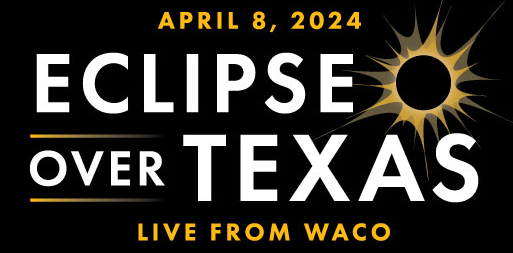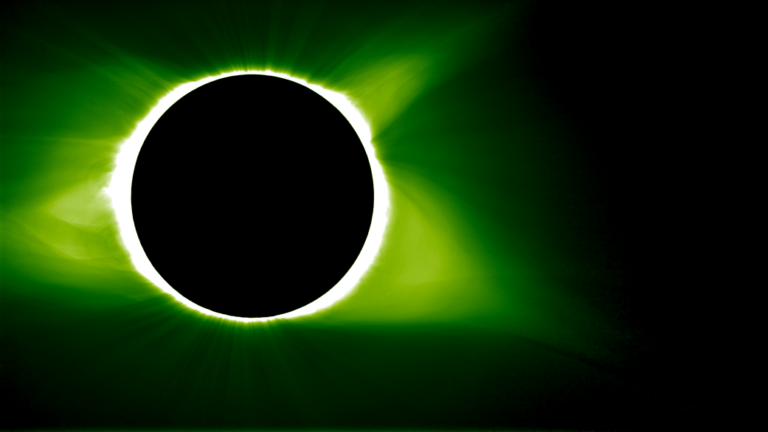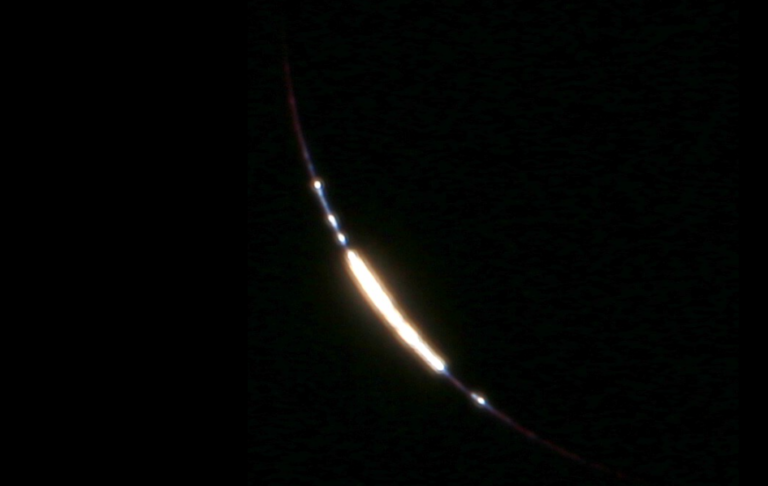One of the special features of the Eclipse Over Texas: Live from Waco event will be the availability of telescopes for public viewing. Although we can’t guarantee you’ll have access to one, there will be several on hand for you to safely view the magnificence of the sun. If you have a telescope with a solar filter, we encourage you to register it here: https://eclipseovertexas2024.com/register-your-telescope/.
While totality will mark the crowning moment of the April 8 solar eclipse, several other phenomena leading up to this much-anticipated climax will be worth experiencing. The entire sequence will be an enchanting, multisensory encounter with one of nature’s sublime spectacles. This will be a once-in-a-lifetime event for many of us.
At the Eclipse Over Texas: Live From Waco event, the fun starts at 12:23:18 p.m., when the Moon takes its first bite out of the Sun in a moment called 1st contact: that signals the beginning of the eclipse. Using a filtered telescope, solar glasses, or other appropriate observing techniques, observers will be able to see more and more of the Sun covered during the approximately 73-minute transition from partial to total eclipse.
At about 1:20 p.m.—20 minutes before totality begins—the visible part of the Sun will have shriveled to almost a point (rather than a disc), resulting in sharper shadows. Soon, when about 85% of the Sun is covered, the sky will have darkened to the point that the planet Venus will be visible with the unaided eye, 34 degrees to the northwest of the Sun. At about 1:30 pm, fainter Jupiter will be visible, a little more than 50 degrees southeast of the Sun.
Soon, the darkening sky will make those witnessing the eclipse feel like night is falling, though the darkest part of the sky will be toward the Sun, rather than at the distant horizon. Observers may notice that birds will stop singing and other daytime animals will cease activity, as if night has truly arrived. Just like at actual nightfall, this time of silence might then be followed by the sounds of crickets, cicadas, frogs, and other nocturnal critters. The temperature will also drop, perhaps up to 15 degrees or so.
At about 1:42:37 p.m.—two seconds before totality begins—the appearance of Bailey’s beads will quickly transition to the brief display of the diamond ring, and then totality begins, designated as 2nd contact. This will last until 1:44:34 p.m. (3rd contact). During totality, the best view is with the unaided eye, looking at the totally eclipsed Sun and also at the so-called 360 degree sunset (all horizons will display sunset colors).
During the exciting buildup to totality, it’s easy to miss some of the features described above. Luckily, they will all be apparent, in opposite order, when totality ends and the Sun is again only partially eclipsed. Slowly, the Moon will move out of our line of sight with the Sun until 3:02:41 (4th contact), when the eclipse ends.
Savor this special moment in your life, a moment when Nature gifts us with one of her most spectacular performances.


